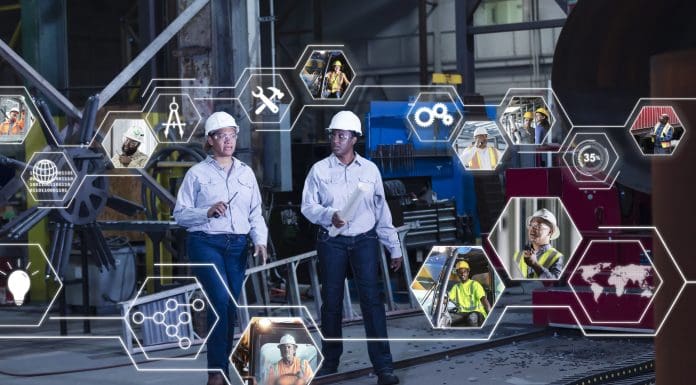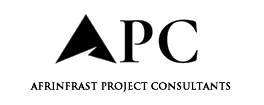
What does it take to achieve seamless collaboration in the built environment? This question shaped the discussion in the third session of our webinar, Project Paradise
Click here to view the webinar on demand.
Industry veterans Dave Wiesman, CEO of Spectrum Engineers, and Brian Laird, manager of Civil Technologies at Rick Engineering, explored how next-generation collaboration tools and processes are reshaping project management, communication and compliance in engineering and construction. If you’re curious about aligning people, processes and technology to create flawless project workflows, you’re in the right place.
What does “Project Paradise” really mean?
The concept of “Project Paradise” emerged during the discussion as an ideal scenario where project execution is seamless, collaborative and genuinely enjoyable for all parties involved. Both Dave and Brian shared personal anecdotes to illustrate what makes a project flourish.
- Dave Wiesman described Project Paradise as more than delivering a technically perfect project. For him, it’s about fostering authentic relationships with teams, engaging stakeholders actively, and creating an environment where everyone is accountable and motivated. When team members say, “That was fun, let’s do it again!”, it’s a clear sign of success.
- Brian Laird echoed similar sentiments, emphasising how synergy among team members, owners and consultants plays a vital role. Collaborative environments that encourage open communication and shared problem-solving lead to better outcomes. For Brian, the informal “magic sauce” lies in creating trust and unity among all stakeholders.
The role of data, information, and technology
How the landscape has evolved
Both experts agreed that the influx of technology into engineering and design has revolutionised workflows. They reflected on the days when projects relied on in-person meetings and fax machines for communication. Fast-forward to today, and email, cloud-based tools and instant collaboration platforms dominate project management.
Dave noted, “Back then, we were thrilled to send meeting minutes via fax. Today, everything has sped up with email and collaborative platforms. Information is faster, expectations are higher, and documentation is more comprehensive.”
Challenges of data overload
While technology has brought efficiency, it has also introduced challenges, such as managing immense volumes of data.
- Dave highlighted a key issue with unmanaged emails. Before adopting centralised systems, projects often faced complications when tracking communication trails, particularly during disputes or claims.
- Brian added that the accessibility of shared project portals now allows team members to find information instantly. However, misinterpretation of written communications remains a risk, underscoring the importance of face-to-face or virtual conversations when clarity is needed.
Building effective collaboration
Both speakers championed three key elements essential for successful project collaboration:
Early stakeholder alignment: Hosting kick-off meetings early in the project life cycle ensures everyone understands the overarching goals.
-
- “Providing all team members the context behind a project eliminates risks and encourages accountability,” Brian shared.
Consistency in processes and technology: Both firms emphasised the need to implement standard tools and processes. As Dave noted, consistent practices across teams ensure every client receives the same high-quality experience.
Leveraging the right tools: Selecting point solutions tailored to specific challenges yields better results than using all-in-one systems. Brian emphasised using engineering rigour in choosing tools, stating, “Process first, technology second.”
Dave also discussed how leadership plays a significant role in driving adoption. His approach involves personally testing tools to ensure their effectiveness before rolling them out across teams. By leading by example, he ensures buy-in from employees.
Mitigating project risks with proactive measures
Modern tools have drastically improved the ability to identify early warnings of projects veering off track. Dave shared how increased communication volume, such as escalated email threads or frequent CCs to senior management, often signals the need for intervention. Both speakers also emphasised that real-time data from reporting tools and proactive communication help pre-empt issues before they escalate.
The golden thread of information
The concept of a “golden thread of information,” or maintaining a single source of truth, is becoming increasingly critical in the built environment sector. Legislation, like the UK’s Building Safety Act 2022, emphasises the need for proper data retention and access. Dave and Brian highlighted:
- Litigation readiness: Having structured email records and project data is essential for dispute resolution.
- Centralised systems: Tools like Ideagen Mail Manager aid compliance by consolidating emails, ensuring communications are organised, accessible and secure. For Dave, this resolved a long-standing challenge of tracking vital project data across multiple teams.
Brian also emphasised the evolution of engineering firms into tech-savvy organisations. Establishing hybrid teams of project managers and IT professionals has become a critical strategy for handling the data complexity of modern projects.
Key takeaways for startups in the engineering sector
For those starting with a “blank sheet of paper,” here’s the guidance distilled from this session:
- Focus on solving client problems and delivering consistent results.
- Map out your core needs and workflows before searching for tools or technologies.
- Build trust with clients by proactively managing information, communication and processes.
- Invest in skilled professionals who are passionate about delivering quality work.
Brian summed it up perfectly when he said, “Start with a blank canvas. Map out what your clients need and use it as your guide for processes and technology.”
For more information on how to build excellence in the built environment, then download the Ideagen Mail Manager e-book here.
Collaboration as the foundation for excellence
This session reinforced how fostering collaboration, implementing structured processes and leveraging modern technology can turn any complex project into a success story. Whether you’re an established firm or a startup, the integration of people, processes, and tools is essential to stay competitive, compliant and effective.
If you’re looking to streamline your communication and build your own “Project Paradise,” tools like Ideagen Mail Manager might just be the key. Request a free demo today.
The post What makes a project paradise? Lessons from AEC leaders appeared first on Planning, Building & Construction Today.

